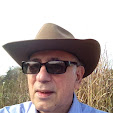
My intimates know that one of my favorite historical characters that I have blogged about is Winston Churchill.
So when I saw a 2010 recent release at Harry Ferguson library, entitled Churchill's Bunker by Richard Holmes (Yale University Press, 2010), I grabbed it off the shelf.
It's an entertaining book. If you want to be sustained only by the underground life, then be prepared to be surprised.
We are told early enough that the ability of the underground bunker to survive a direct hit above was always in doubt; thank God, for Churchill and the country's sake, Hitler's Lutwaffe bombing never tested its integrity.
What impressed me about Holmes's well documented and researched history are a number of interesting characters that have a Churchill underground connection, several above ground international conferences that are reported and an excellent collection of photographs.
Two characters stand out. One is
Dennis Wheatley. We first meet Dennis who worked in the Cabinet War Rooms (CWR), aka underground bunkers, with this quote from his book
Stranger Than Fiction:
Hitler never envisaged being driven into a cellar; so when at last the blasting of Berlin by the Russian guns forced him and his personal staff to seek refuge in the Reich Chancellery they had to descend into a maze of chilly, hastily furnished concrete rooms having none of the amenities of a Great Headquarters. In Britain, on the other hand, the Committee of Imperial Defence had had the forethought to take precautions against the annihilation of its 'brain' by heavy bombing.
What intrigued me about this Wheatley character (of whom I was unfamiliar) is Holmes' own comment: "He was,as we have seen, being more than a little generous : but then, he was an author who travelled to the wilder shores of fiction." (p.32).
Indeed, Wheatley was a prodigious writer of primarily fiction. 75 works of his works are listed on wiki; and in the 1930's -1960's, he was one of the best selling authors in the world. Though he commanded an incredible knowledge of the occult and satanism, his writing showed an aversion to these obscure arts in practice.
So, naturally, being a blogger who savors fiction as least as much as straight historical prose, I read on in the work until I reached Chapter 4 , entitled Life in the Bunker where Wheatley is again mentioned.
Here Holmes tells us two revealing notions: first, Wheatley's books dealing with the occult and satanism kept Holmes up many a night and that the former wrote over 500,000 words on 'various aspects' of the war (pp.133-34) and that his papers included 'Resistance to Invasion' and two additional papers 'Further Measures for Resistance to Invasion' and 'Village Defence.'
Wheatley was later involved in deception and one of his many projects included misleading the German High Command as to the location of the D-Day invasion.
Another character I enjoyed reading about is
Joan Bright who has many many mentions--too numerous to refer to all. She is credited with opening up the War Office to competent females (such as Ms. Olive Christopher who recruited agents such as the actor David Niven); based on her working with Ian Fleming in intelligence, the latter loosely based his Miss Moneypenny character in the James Bond 007 series on her: she is the model of efficiency, secrecy and competence.
She refused to have her male superiors treat her as a common secretary. While working in the bunkers, she was asked by then Major Anthony Head to take dictation and matter of factly told him she was neither a clerk or stenographer.
She was later promoted 'upstairs' where she was in charge of an information room for visiting commanders in chief; "With her systematic mind, she was able to marshal a mass of complex documents with clear and accessible filing systems she designed." (p.139).
In a Chapter 3 called Running the Show, we are introduced to not only Winnie's bohemian lifestyle (e.g. often greeting important advisers clothed in a large bath towel and his perennial cigar in his mouth), but to his coterie of insiders. Like a mediaeval court , "courtiers had to dance to the rhythm of the monarch's day." (96)
The insiders included Professor Frederick Lindemann, a Professor of Experimental Physics, a wealthy polymath who became his personal assistant and then his paymaster. Brendan Bracken was another eccentric confidant who had "great charm, keen intelligence and an encylopedic memory" despite "unruly red hair, thick glasses and poor teeth." He constantly amused his boss with an endless flow of stories and was promoted to Minister of Information.
Major Sir Desmond Morton was Churchill's neighbor at Chartwell in Kent and passed on information to him about German rearmament in the 1930's in violation of the Official Secrets Act. He may have been the most powerful of the prime minister's advisors being described as the Chief Cardinal and arch schemer (in the tradition of
Max von Oppenheim) at Churchill's Papal Court.
Churchill did the most traveling of the three allied leaders, logging an estimated 110,000 miles by the end of 1943. Much detail is brought to bear in the section called The Bunker Goes Abroad. Particularly enlightening is the degree of secrecy that both FDR and Churchill maintained when they first met at Placentia Bay, Newfoundland. FDR supposedly took a fishing trip to Maine and then boarded a US cruiser. Churchill kept his boarding of the Prince of Wales battleship under tight wraps.
In fact Churchill had such a large retinue of aides and personal staff one of his aides commented "Cardinal Wolsey might have envied" the group. (117).
Among the 27 photos accompanying the text is image number 7. Here is depicted the combined office and bedroom off the main corridor of the underground Cabinet War Room. The quarters are very tight and there was a constant hum of the 'air conditioning' system. It is no wonder that Churchill rarely slept here.
The book is an entertaining read.













